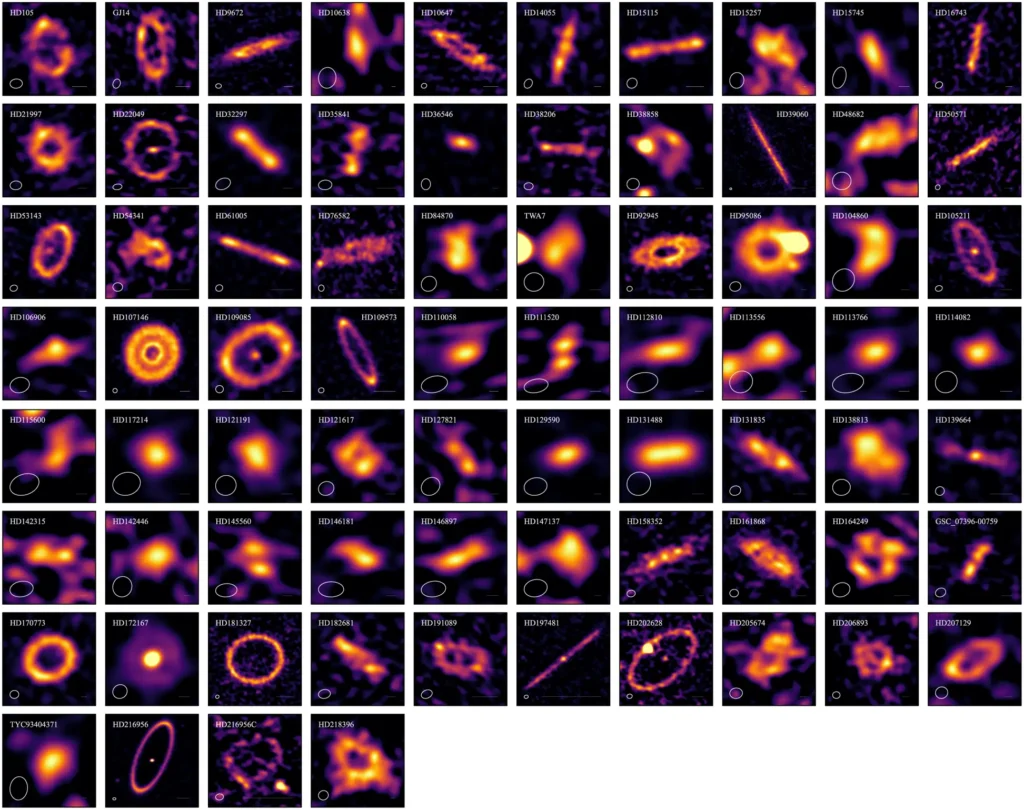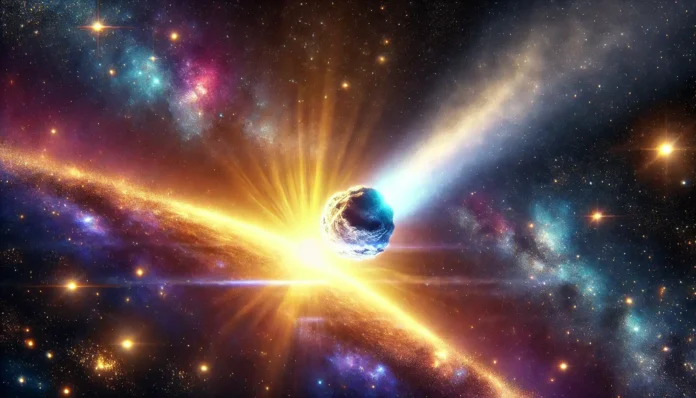Cosmic Clues: The REASONS Project Unveils Hidden Secrets of Space
Imagine peering into the vastness of space and discovering colossal belts of dust orbiting distant stars. These aren’t just cosmic leftovers—they’re the building blocks of planetary systems, like our own solar system in its infancy. Thanks to the groundbreaking REASONS project, astronomers have compiled one of the most detailed studies ever conducted on these celestial dust rings. By using cutting-edge telescopes, researchers have captured unprecedented images of 74 dust belts, offering fresh insights into how planets might form and evolve.
Further observations indicate that these belts serve as evidence of ongoing planetary formation processes, where young planets may still be actively shaping their environments. By studying these dust belts in various stages of evolution, astronomers gain a deeper understanding of how planetary systems develop over billions of years.
A Galactic Dust Storm: What Are These Mysterious Belts?

Picture a giant ring of cosmic debris swirling around a young star—like Saturn’s rings, but stretched across billions of miles. These circumstellar belts are made of dust and rock fragments left over from the chaotic early years of star formation. Over time, these materials either form planets or get swept away by stellar winds. The REASONS project, utilizing the powerful ALMA (Atacama Large Millimeter Array) and SMA (Submillimeter Array) telescopes, has taken a deep dive into the structures of these belts, revealing that they are wider and more spread out than previously believed.
Recent analysis suggests that these belts might also contain clues about planetary migration. As newly formed planets shift in their orbits, they may interact with surrounding dust and debris, leaving distinctive patterns that astronomers can study to infer their past movements.
A Cosmic Puzzle: Why Are These Belts So Wide?
One of the most exciting revelations from the REASONS project is that these dust belts aren’t narrow rings, but vast, extended discs. This was surprising, as many astronomers expected them to be more confined. Theories suggest that unseen planets could be tugging at these belts, spreading the dust over a larger area. Another possibility is that what we’re seeing are the remnants of protoplanetary rings, which may have been much denser in the past but have since thinned out as material clumped together to form planets.
Observations indicate that radiation pressure and stellar winds might contribute to this broadening effect. Additionally, minor collisions among rocky bodies within the belt could generate more dust, keeping the belts extended for longer periods.
The Incredible Shrinking Dust Belt: A Story of Evolution
Not only are these belts wide, but they are also fading over time. Scientists discovered that the inner parts of these belts lose dust faster than the outer edges, which follows a pattern predicted by collisional evolution models. Essentially, the dust particles inside the belt constantly collide and break apart, gradually reducing the amount of material present. This finding is crucial because it provides a timeline for how long these dust belts exist before completely dispersing or forming planets.
Understanding this process allows astronomers to estimate the age of planetary systems. If a star has a significantly depleted dust belt, it may suggest an older system where most planets have already formed.
Radial Dust Depletion Over Time
One significant observation is that belt dust masses decrease over time in a manner dependent on their radial distance from the star. Specifically, dust is depleted more rapidly in smaller belts. This pattern aligns with predictions from collisional evolution models, which suggest that dust particles within these belts collide and fragment over time, leading to a gradual reduction in dust mass.
By quantifying the rate at which dust disappears, researchers can estimate the expected lifespan of these belts and predict when they might become undetectable in future observations.
Broad Discs vs. Narrow Rings
Contrary to previous assumptions that planetesimal belts are narrow rings, the study found that most belts are broad discs with much wider fractional widths than those observed in protoplanetary discs. This finding implies that these belts may contain unresolved substructures or could be the result of protoplanetary rings migrating outward, leading to the formation of broader planetesimal discs.
This suggests that planetary system architectures may be more diverse than previously believed, with various factors influencing the final arrangement of planets and debris disks around stars.
Quantifying Dust Depletion: A Simple Calculation
To illustrate the concept of dust depletion, let’s consider a simplified example. Suppose a planetesimal belt initially contains a dust mass of M_0 = 10^{25} kilograms. If the dust mass decreases exponentially over time with a decay constant λ, the mass M(t) at time t can be expressed as:
M(t) = M_0 \times e^{-λ t}
Assuming a decay constant λ = 0.1 per million years, we can calculate the remaining dust mass after 10 million years (t = 10):
M(10) = 10^{25} \times e^{-0.1 \times 10}M(10) = 10^{25} \times e^{-1}M(10) ≈ 10^{25} \times 0.3679M(10) ≈ 3.679 \times 10^{24} \text{ kg}
This calculation shows that after 10 million years, approximately 36.79% of the initial dust mass remains, illustrating the process of dust depletion over time.
Unlocking the Secrets of Planetary Birth
By analyzing the dust composition and its distribution, scientists can learn a great deal about the conditions needed for planet formation. The REASONS project offers strong evidence that these belts play a significant role in shaping planetary systems, including our own. Earth and its neighboring planets likely emerged from a similar protoplanetary disc billions of years ago. Understanding these belts today is like looking back in time at how our own cosmic neighborhood came to be.
The Final Takeaway: A Step Closer to Finding New Worlds
The REASONS project isn’t just about dust—it’s about uncovering the processes that lead to the birth of new planets. These findings bring us closer to understanding which stars are likely to host planets and how those planets develop over millions of years. With each new discovery, we refine our knowledge of how solar systems evolve—and maybe, just maybe, we inch closer to finding another Earth-like world among the stars.
For further reading, visit the original study: Astronomy & Astrophysics Journal




